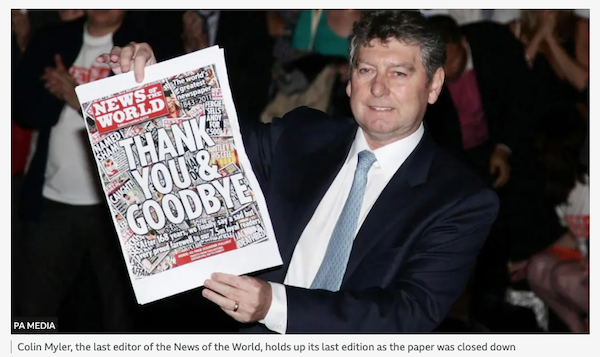How to make your news articles more accessible for visually impaired readers
BBC journalist Johny Cassidy shares guidance on improving alt-text descriptions to enhance user experience for around two million Britons affected by sight loss



BBC journalist Johny Cassidy shares guidance on improving alt-text descriptions to enhance user experience for around two million Britons affected by sight loss


This article was migrated from an old version of our website in 2025. As a result, it might have some low-quality images or non-functioning links - if there's any issues you'd like to see fixed, get in touch with us at info@journalism.co.uk.
In a nutshell:
A BBC journalist has published a set of guidance on writing alt text for images to make news more accessible.
Alt text (or alternative text) is descriptive text for images or other visual content in a digital setting. It is designed to make visual content accessible to people who are blind or have low vision. Their screen readers (such as Microsoft Narrator, JAWS, and NVDA) can read the text aloud, which they would not otherwise be able to.
Johny Cassidy is a digital special project producer for BBC, and also co-chairs BBC Ability, the broadcaster's disabled staff network where he advocates for better diversity and inclusion across the organisation.
He was also a visiting fellow for the Reuters Institute for the Study of Journalism Fellowship in 2022, where his research focused on how blind audiences are being left behind in the visual data revolution. He found that many blind audiences were missing out on crucial covid-19 health information that was being presented visually.
That led to new guidance for BBC journalists on how to write alt-text for news articles, which has since been published externally. It has been used to train nearly 800 staff journalists since its publication through workshops.
"On the face of it, this might seem like an accessibility consideration, but in reality, it’s about delivering value for all audiences, no matter how they’re accessing content," says Cassidy in an email to Journalism.co.uk.
"At a time when quality journalism and access to information is more vital than ever, it’s crucial we’re offering that same experience to everyone."
Of course, not all images are made equal. In news, we can use stock images, infographics, news wire shots, live photography, and images with words burned into them. There is also the not-so-small matter of differentiating between captions and alt text. This and more can be found in the guide.

Did you know? If you want a screen reader to skip an image (because it does not add information to the article and is only there for aesthetic reasons) simply put in empty quote marks - i.e. "" - as if you leave it blank, the screen reader will read a meaningless code to the listener.
Insights like these have improved the quality of the text descriptions on BBC news stories, according to Cassidy. And it has been well-received by the organisation, too.
"I was worried that it might be considered more work in an already highly pressured newsroom, but the truth is that journalists really get it and want to take the time to write them."
Around 2m Britons live with sight loss and many more are at risk of developing sight loss in the future. That is a big chunk of the population with limited access to quality information. Alt text is not the only option either; sub-titles and audio descriptions also improve accessibility to news.
"The possibilities offered by generative AI could make a huge difference if we get it right. The ability to use the technology to create multimodal versions of stories for people who need things delivered in different ways could have a huge impact on accessibility. All these need to be talked about more and experimented with.
"I think we’re making huge progress. People do appreciate having guidance on how to write text descriptions for images. I’m hoping this leads to more awareness which in turn will lead to better experiences for everyone."
Johny Cassidy also publishes the Journalism A11y newsletter focusing on the intersection of journalism and accessibility